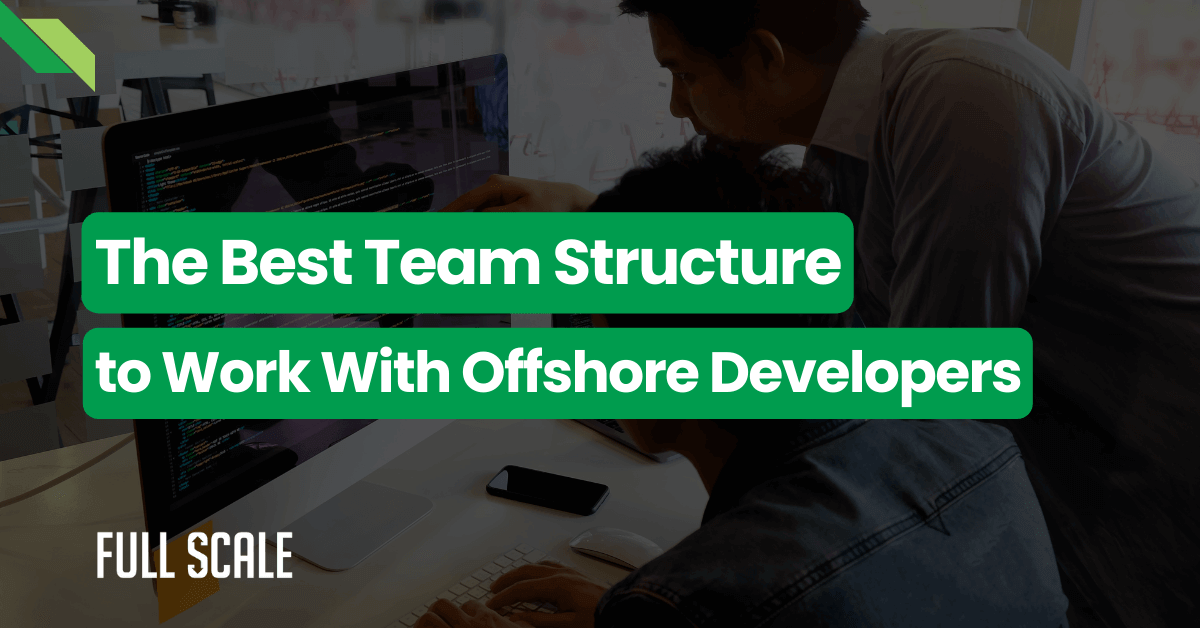Every CTO tells me the same thing: “We only hire in-house.”
Like it’s some badge of honor. Here’s what they don’t mention: three open positions for six months, two developers lost this quarter, $220K spent on $180K talent.
You’re not protecting quality standards. You’re creating in-house hiring problems that compound daily while competitors ship features.
I learned this the hard way at Stackify. We burned $200K on recruiters trying to fill four positions. Meanwhile, our product roadmap sat frozen for eight months.
Local hiring isn’t the gold standard. It’s a constraint you inherited.
What You'll Learn:
- The Five Hiring Debt Multipliers draining your budget
- Why 95% retention beats 60% industry average (with proof)
- The Direct Integration Model that eliminates middlemen
- Calculate your actual hiring debt in 60 seconds
- Why the Philippines produces better developers than your local market
What Are the Problems with In-House Hiring?
| Problem | Impact | Cost |
|---|---|---|
| Time Debt | 90+ days vs. 14 days | 720 hours lost per position |
| Cost Spiral | 2-3X market rates | $340K first year per developer |
| Turnover Trap | 41.4% annual turnover | $100K-$150K replacement cost |
| Limited Talent | 17% of global developers | Fewer qualified candidates |
| Opportunity Cost | 40% VP time on recruiting | $100K annually in lost work |
The real cost isn’t the salary. It’s features you don’t ship, and market share your faster competitors take.
These in-house hiring problems don’t just slow you down—they multiply. Each constraint amplifies the others, creating a death spiral that kills velocity.
The Five Hiring Debt Multipliers
I call these the Five Hiring Debt Multipliers because each one compounds the others. This framework comes from analyzing our 500+ client placements.

1. Time Debt: The 90-Day Black Hole
Average tech hiring takes 90+ days from job post to start date. At Stackify, every day a position remains open costs us $800 in delayed feature revenue.
According to McKinsey’s 2024 Developer Productivity Report, companies that reduce time-to-hire by 50% see 23% faster product delivery.
2. Cost Spiral: You’re Paying 3X for Same Talent
Base salary inflation runs 15-20% year-over-year for developers per the Bureau of Labor Statistics 2024 Employment Report. Add recruiting fees at 20-30%—that’s $40K-$60K per hire.
| Cost Component | Local Hiring | Staff Augmentation |
|---|---|---|
| Base Salary | $200,000 | $75,000 |
| Recruiting Fee (25%) | $50,000 | $0 |
| Signing Bonus | $30,000 | $0 |
| Benefits/Overhead (30%) | $60,000 | Included |
| First-Year Total | $340,000 | $75,000 |
| Annual Savings: $265,000 per developer | ||
Check Full Scale’s pricing. Senior developers at $75K-$90K annually, fully loaded, zero recruiting fees, no equity dilution.
3. Turnover Trap: The 18-Month Reset Button
The tech industry hit 41.4% annual developer turnover in 2024 per LinkedIn’s Workforce Report. The cost to replace one developer runs 6-9 months of their salary.
How we prove 95% retention: Of 500+ developers placed since 2020, only 23 left voluntarily. That’s 4.6% attrition over 38-month average engagements.

Read our developer retention strategies guide for details.
4. Limited Talent Pool: Fighting Over 17% of Developers
Global developer population hit 26 million per Stack Overflow’s 2024 Developer Survey. US developers total 4.4 million.
You’re competing for 17% of available talent. The Philippines alone graduates 40,000+ computer science students annually.
5. Opportunity Cost: Your VP of Engineering Is a Recruiter Now
Your VP of Engineering spends 30-40% of their time on hiring. That’s $100K annually in strategic work not happening.

When you understand these Five Hiring Debt Multipliers, you realize in-house hiring problems aren’t just expensive—they’re existential threats.
Why In-House Hiring Problems Get Worse in 2025
The in-house hiring problems that slowed you in 2024 will destroy you in 2025. Here’s why:
AI amplifies scarcity: GitHub Copilot makes good developers 10X faster. The bottleneck isn’t code—it’s having developers to execute.
Remote killed geography: Your “local” developer works from home anyway. You’re paying a location premium for zero benefit.
Competitors use hybrid: Deloitte’s 2024 Survey found 78% of tech companies use hybrid models. They’re shipping while you schedule phone screens.
The Direct Integration Model
Most companies claiming to solve in-house hiring problems just create new problems. They say “direct integration,” then stick project managers between you and developers.
I built Full Scale because I was tired of getting burned by offshore companies at VinSolutions and Stackify.
What actual direct integration looks like:
- Developers join your Slack workspace
- They’re in your daily standups
- They commit to your GitHub repos
- They use your project management tools
- No middlemen, no account reps, no interference
Traditional Outsourcing vs. Direct Integration
| Traditional Outsourcing | Full Scale Model |
|---|---|
| Project-based contracts | Your team, our payroll |
| Project managers block access | Direct Slack/GitHub access |
| 41% annual turnover | 4.6% turnover (95% retention) |
| Developers juggle 5+ clients | Dedicated to you only |
This eliminates in-house hiring problems without creating outsourcing problems.
Three reasons based on 500+ placements:
- Cultural alignment: Third-largest English-speaking population globally
- Time zone overlap: Attend your standups, code during their day, and wake up to progress
- Talent density: 40,000+ CS graduates annually, with less market saturation than India
Average Full Scale developer: 7.2 years of experience with US companies. They’re senior developers competing globally.
Real Results: MedTech Solutions
Came to us with three open positions after six months of hiring. Lost two enterprise deals because the platform wasn’t ready.
What happened:
- Week 1: Presented five senior Node.js developers
- Week 2: Client selected three developers
- Week 3: Integrated into Slack, GitHub, and standups
- Month 8: Team scaled to 15 developers, v2.0 launched
Results:
- 14 days vs. 180+ days hiring time
- 62% cost reduction vs. local projections
- Zero turnover in 18 months
- Won back both enterprise clients plus three more
See more client success stories.
Calculate Your In-House Hiring Problems Cost
In-House Hiring Problems Calculator
See what your local-only strategy costs using the Five Hiring Debt Multipliers.
Your Annual Hiring Debt:
Most CTOs underestimate the costs of in-house hiring problems by 50%+ because they don’t account for compounding effects.
Why Partner with Full Scale
We’ve built 500+ offshore teams solving in-house hiring problems:
✅ Matt Watson’s credibility: Two exits (VinSolutions, Stackify). Built Full Scale because I needed this solution.
✅ Direct Integration Model: No project managers. Your Slack, your standups, your GitHub.
✅ 95% retention proven: Only 23 of 500+ developers left voluntarily. 4.6% attrition over 38 months.
✅ Philippines specialization: Cultural alignment, time overlap, 7.2 years average experience.
✅ Two-week hiring: Pre-vetted talent pool. Week 1 candidates, week 2 integration.
✅ Transparent pricing: $75K-$90K annually. Zero recruiting fees. See pricing.
✅ Month-to-month contracts: Scale with 30 days’ notice. Walk away anytime.
Check our offshore team building guide and the Philippines hiring advantages.
Stop Losing to Competitors Who Figured This Out
78% of tech companies use hybrid models. Your competitors ship while you schedule phone screens.
Full Scale uses the Direct Integration Model, where developers work exclusively for you. Toptal and Turing use project managers and split developer time between clients. Upwork is a freelancer marketplace with no vetting. Our developers commit full-time, eliminating in-house hiring problems without creating outsourcing headaches.
Three reasons: cultural alignment with US business practices, 12-hour time zone allowing standup overlap, and 40,000+ CS graduates annually with less market saturation. Filipino developers understand American business culture instinctively. This solves the talent pool multiplier in our Five Hiring Debt framework.
We track every placement since 2020. Of 500+ developers placed, only 23 left voluntarily over 38-month average engagements. That’s 4.6% attrition. We treat developers as long-term employees with career paths. This eliminates the turnover multiplier driving in-house hiring problems.
We offer replacement guarantees in the first 90 days at no additional cost. But 98% of placements succeed long-term due to our vetting. You also get month-to-month contracts—walk away anytime if it doesn’t eliminate your in-house hiring problems.
Senior developers cost $75K-$90K annually, fully loaded. That’s 62% less than $200K+ local hiring, including salary, recruiting fees, bonuses, and overhead. For three developers over five years, save $1.665M. Real money you invest in a product instead of in-house hiring problems. See transparent pricing.

Matt Watson is a serial tech entrepreneur who has started four companies and had a nine-figure exit. He was the founder and CTO of VinSolutions, the #1 CRM software used in today’s automotive industry. He has over twenty years of experience working as a tech CTO and building cutting-edge SaaS solutions.
As the CEO of Full Scale, he has helped over 100 tech companies build their software services and development teams. Full Scale specializes in helping tech companies grow by augmenting their in-house teams with software development talent from the Philippines.
Matt hosts Startup Hustle, a top podcast about entrepreneurship with over 6 million downloads. He has a wealth of knowledge about startups and business from his personal experience and from interviewing hundreds of other entrepreneurs.




